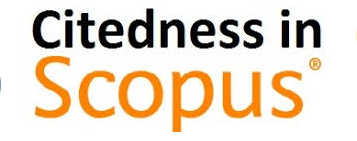Problems and Dilemmas: ASEAN Commitments in Disaster Management
DOI:
https://doi.org/10.18196/iclr.v4i1.13219Keywords:
ASEAN, disaster management policy, emergency response, non-intervention principles, sovereignty principlesAbstract
This research aims to elaborate the problems and dilemmas of disaster management and emergency response of ASEAN. This paper has adopted normative qualitative legal research with statutory approaches. The data will be analysed by using descriptive-analytical analysis. The research found that there are some major problems that faced by ASEAN members in working collectively on the disaster management and emergency response, such as non-intervention principles and sovereignty principles. The Southeast Asian region is remarkably vulnerable to natural and man-made disasters which repeatedly cause devastations to both human lives and properties. The experience has shown that local government and holders with their capacity have proved their ability to handle small and medium scale emergency response, but for some circumstance the host state sometimes cannot deal with this issue. Due to that issue Association of Southeast Asian Nations (ASEAN) as the regional organization in Southeast Asia playing an importance role to building a well-prepared disaster management through join collaboration among ASEAN member by reason of humanity.References
Alemanno, A. (2011). Governing Disaster - The Challenges of Emergency Risk Regulation.
Arumbinang, M, H. (2016). The Implementation of International Disaster Response Laws Towards Indonesian Sovereignty. Undergraduate Thesis. Yogyakarta: Universitas Muhammadiyah Yogyakarta.
Besson, S. (1987). Sovereignty, in Max Planck Institute for Comparative Public Law and International Law. Encyclopedia of Public International Law, V.
Cipto, B. (2007). Hubungan Internasional di Asia Tenggara: Teropong terhadap Dinamika, Realitas dan Masa Depan. Yogyakarta: Pustaka Pelajar.
Crawford, J. (2012). Brownlie’s Principles of Public International Law. Oxford: Oxford University Press.
Erica, H. (2009). International Law and Standards Applicable in Natural Disaster Situation. Rome: IDLO.
Guttry, d. A. (2012). International Disaster Response Law. The Hague: Asser Press.
Imamura, F. e. (2011). Tsunami Disaster Mitigation by Integrating Comprehensive Countermeasure in Padang City, Indonesia. Journal of Disaster Research, Volume VII.
Konoorayar, V. (2006). Disasters: Global Response to the Challenges. AALCO Quarterly Bulletin, Forthcoming.
Krasner, D. S. (1999). Sovereignty: Organized Hypocrisy. New Jersey: Princeton University Press.
Lai, Y. A. (2009). A Proposed ASEAN Disaster Response, Training and Logistic Centre Enhacing Regional Governance in Disaster Management. Springer-Verlag, XVI.
Reinecke, I. (2010). International Disaster Response Law and the Co-ordination of International Organisations. The ANU Undergrad Research Journal, II.
Santiago, I. J. (2009). Community Building at the Time of Nargis: The ASEAN Response. Journal of Current Southeast Asian Affairs, III.
Toman, J. (2006). International Disaster Response Law: Treaties, Principles, Regulations and Remaining Gaps. SSRN Electronic Journal.
Triyana, H. J. (2013). The Implementation of Natural Disaster Management Program in Indonesia Between 2007 and 2013. Mimbar Hukum, XXV.
Downloads
Published
Issue
Section
License
By publishing with Indonesian Comparative Law Review, authors agree to the following terms:
1. Authors retain the copyright to their work and grant Indonesian Comparative Law Review the right of first publication, while also licensing the work under a Creative Commons Attribution License (CC BY 4.0). This license permits others to share the work, provided they acknowledge the author and the initial publication in this journal.
2. Authors may enter into separate agreements for non-exclusive distribution of the published version of their work, such as posting it to an institutional repository or including it in a book, with acknowledgement of its initial publication in this journal.
3. Authors are encouraged to share their work online, for example on institutional repositories or personal websites, both before and during the submission process. This practice can lead to productive exchanges and increased citation of published work.



